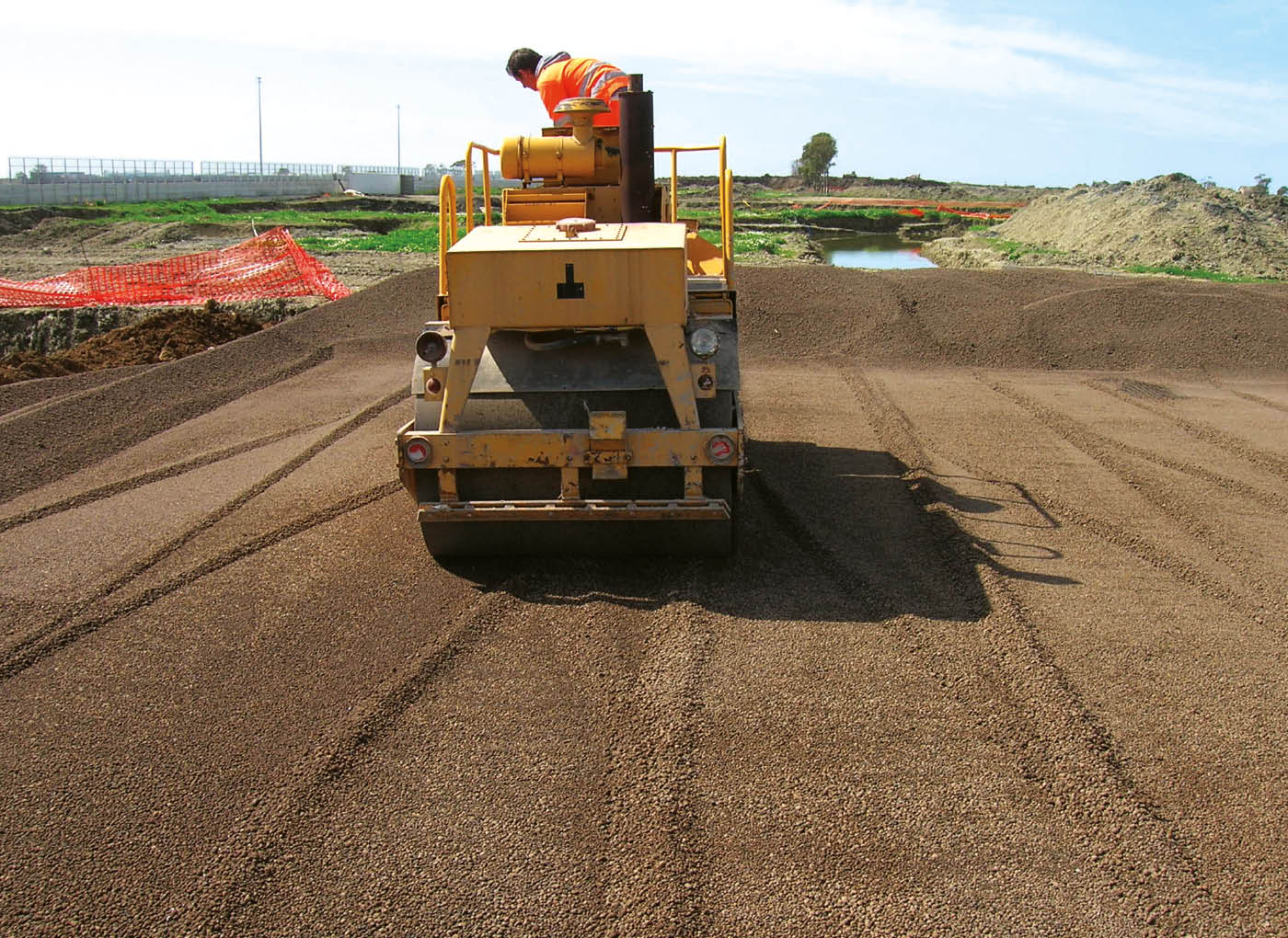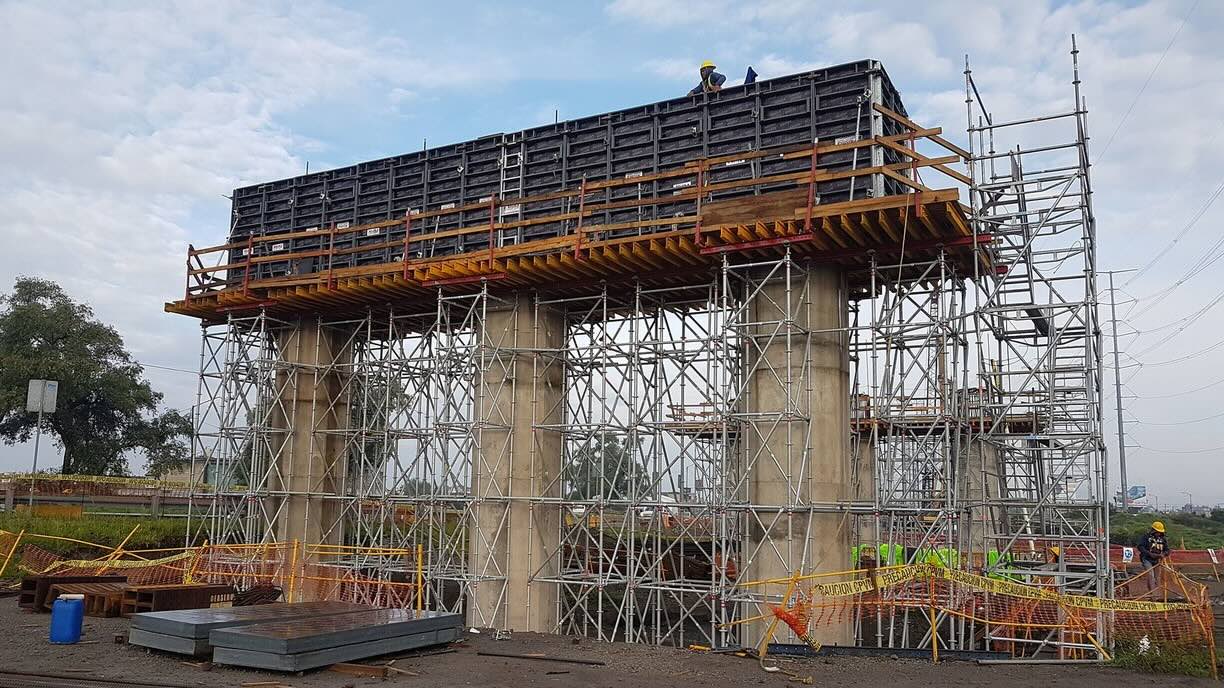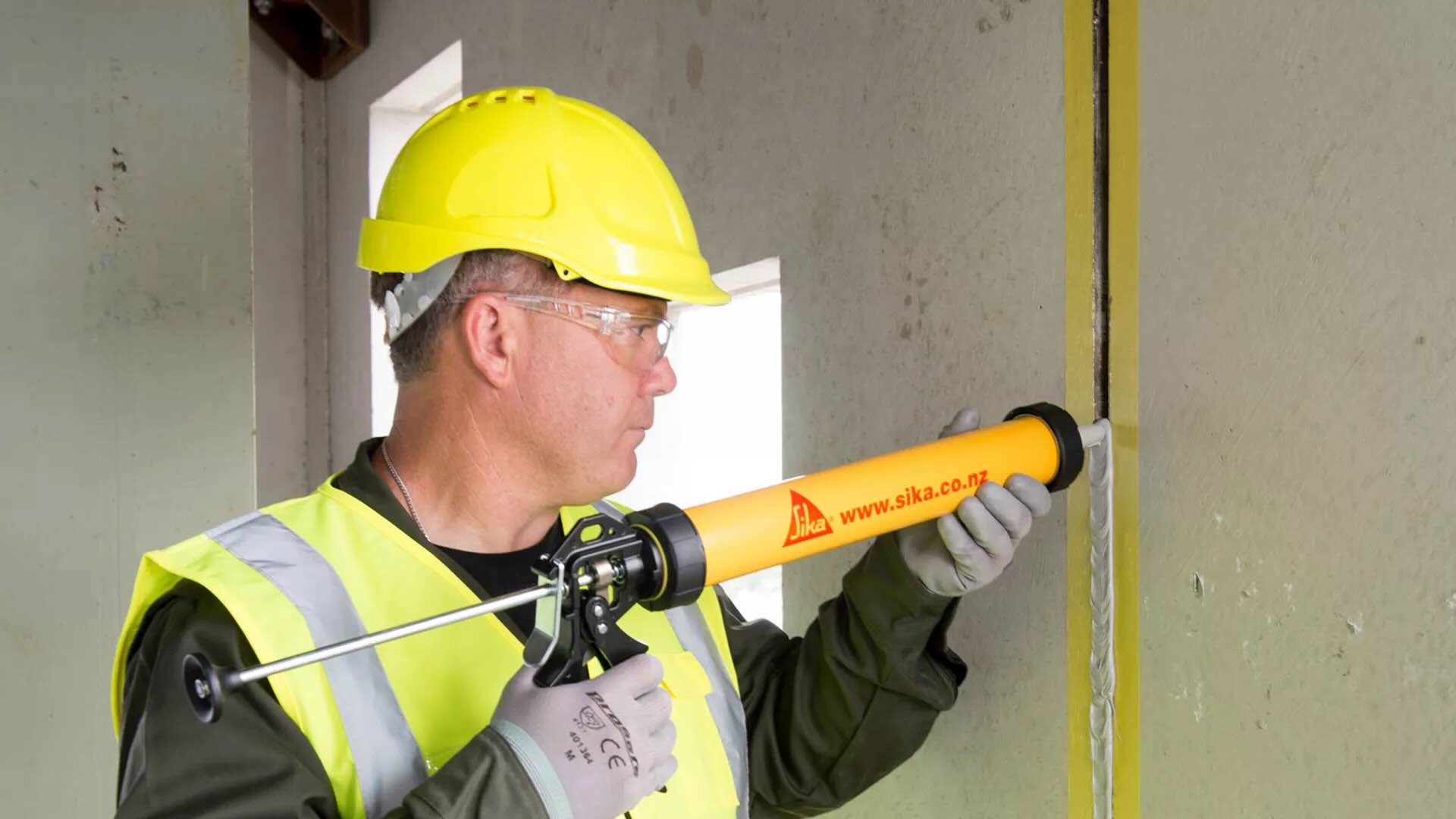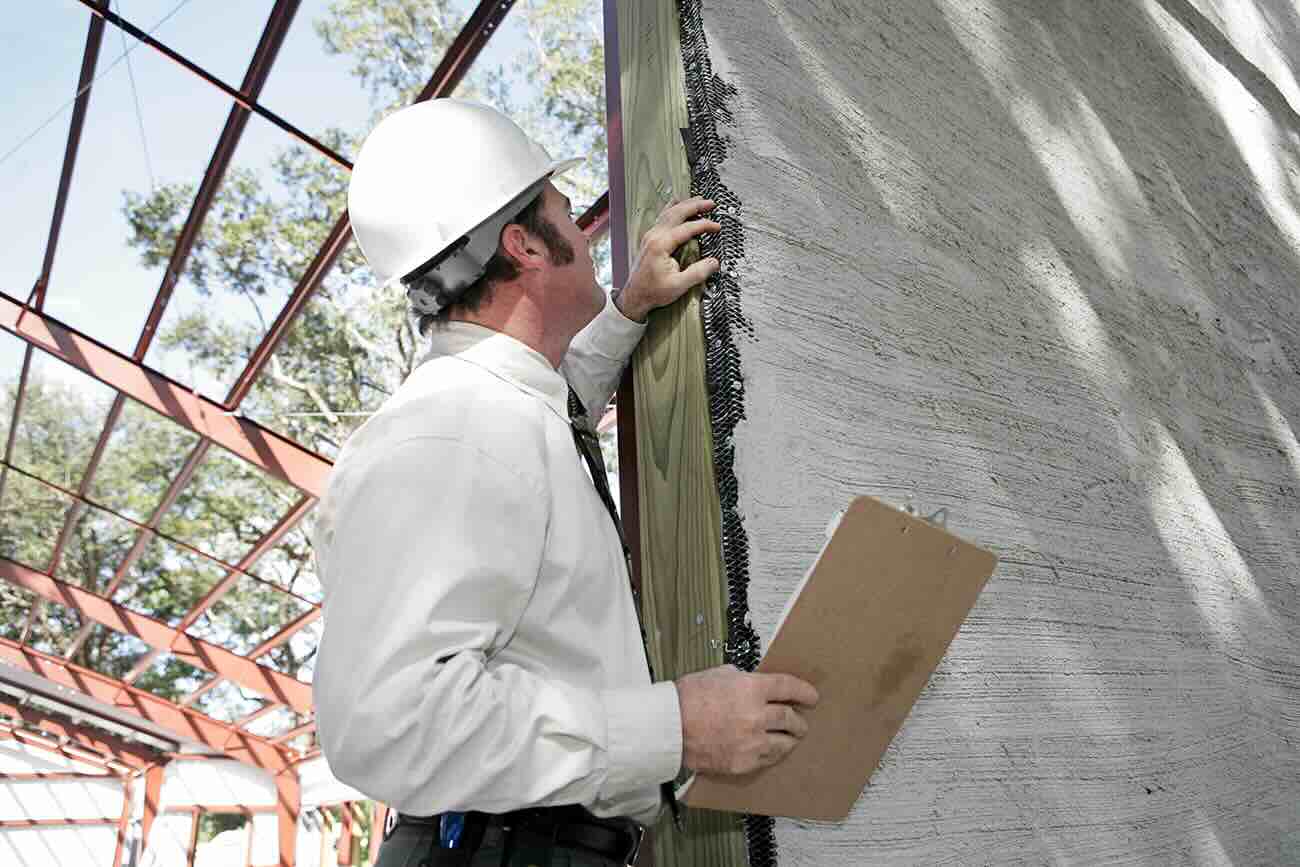Home>diy>Building & Construction>What Is Embankment In Construction


Building & Construction
What Is Embankment In Construction
Modified: January 9, 2024
Discover what embankment is in the field of building construction and how it is utilized to create stable foundations and prevent erosion. Learn more about this essential construction technique.
(Many of the links in this article redirect to a specific reviewed product. Your purchase of these products through affiliate links helps to generate commission for Storables.com, at no extra cost. Learn more)
Introduction
Construction projects are a vital part of our modern society, shaping the landscape and providing us with infrastructure for various purposes. Whether it’s roads, bridges, or buildings, the construction process involves a range of techniques and components to ensure the successful completion of a project. One crucial aspect of construction is the creation of embankments.
Embankments play a critical role in construction, providing support, stability, and protection to various structures and landscapes. They are essentially constructed slopes or raised banks of earth or other materials that are used to raise the ground level and create a stable foundation for construction projects.
In this article, we will explore the importance of embankments in construction, the types of embankments, the factors that need to be considered during their construction, the materials used, the procedures involved, and the challenges faced in the process. We will also touch upon the maintenance of these embankments to ensure their longevity and effectiveness.
By understanding the significance of embankments and the various aspects related to their construction, we can gain valuable insights into the world of civil engineering, infrastructure development, and construction techniques.
Key Takeaways:
- Embankments are essential for construction, providing stability, water management, and environmental protection. Understanding their importance and construction factors is crucial for successful infrastructure development.
- Maintenance is key to ensuring the longevity of embankments. Regular inspections, erosion control, and drainage system maintenance are vital for preserving their stability and functionality over time.
Read more: What Is Construction
Definition of Embankment in Construction
In the realm of construction, an embankment refers to a constructed slope or raised bank of earth or other materials. It is designed to elevate the ground level and provide a stable foundation for various types of construction projects. Embankments are typically used in situations where the natural ground level is not suitable for the intended purpose.
Embankments are used in a wide range of construction projects. They can be found in road and highway construction, railway projects, water management systems, and even in the development of buildings and structures on uneven or unstable terrain.
The primary purpose of an embankment is to provide support, stability, and protection. By raising the ground level, an embankment helps to create a more even and level base for construction. This is particularly important in areas with uneven ground or slopes, where a flat surface is required for the project to be built upon.
Besides providing a stable foundation, embankments also serve other functions. They can be used to control and manage the flow of water, preventing floods or waterlogging. In road and railway construction, embankments are often built to create elevated surfaces, allowing safe and efficient transportation over areas that may be prone to flooding or have soft, unstable soil.
Furthermore, embankments can act as barriers or protective structures. They can shield vulnerable areas from environmental forces such as erosion, landslides, or tidal waves. By strategically designing and constructing embankments, engineers can mitigate risks and safeguard both the construction site and the surrounding areas.
Embankments can vary in size, shape, and construction materials, depending on the specific requirements of the project and the nature of the terrain. From small embankments in residential areas to massive structures supporting highways or railways, embankments are versatile tools in the construction industry.
Now that we have a clear understanding of what embankments are and their purpose in construction, let’s explore the importance of embankments in more detail.
Importance of Embankments in Construction
Embankments play a crucial role in construction projects, offering numerous benefits and ensuring the success and longevity of various structures. Let’s delve deeper into the importance of embankments in construction:
- Support and Stability: One of the primary functions of embankments is to provide support and stability to the construction site. By raising the ground level and creating a flat, even surface, embankments help ensure that buildings, roads, and other structures have a solid foundation. This prevents settling, sinking, and structural failure that could occur on uneven or weak terrain.
- Water Management: Embankments are crucial in managing water flow and preventing flooding. They can be constructed in areas prone to excessive rainfall or near bodies of water to divert water away from the construction site. Embankments can also act as barriers, preventing water from seeping into the foundation of structures or causing erosion.
- Environmental Protection: Embankments serve as protective barriers against environmental forces such as landslides, erosion, and tidal waves. They can be strategically designed and constructed to redirect or absorb these forces, safeguarding both the construction site and the surrounding environment.
- Elevated Surfaces: In areas with soft or unstable soil, embankments are used to create elevated surfaces for roads and railways. By building embankments, transportation infrastructure can be constructed safely and efficiently. This is especially crucial in low-lying or flood-prone areas where maintaining a clear passageway is essential.
- Cost-Effective Solution: Constructing embankments can often be a more cost-effective solution compared to other methods of land preparation or stabilization. Rather than extensive excavation and foundation reinforcement, embankments provide a practical and efficient approach, especially when dealing with challenging terrains.
The importance of embankments in construction cannot be overstated. They provide the necessary support, stability, and protection for a wide array of construction projects. Whether it’s ensuring the longevity of infrastructure, managing water flow, protecting against environmental forces, or creating elevated surfaces, embankments are indispensable tools for engineers and construction professionals.
Now that we understand the significance of embankments, let’s explore the different types of embankments commonly used in construction.
Types of Embankments
Embankments in construction come in various forms, each designed to meet specific project requirements and address the unique characteristics of the terrain. Let’s explore some common types of embankments:
- Earth Embankments: Earth embankments are the most commonly used type. They are constructed using compacted soil, either in its natural form or with added stabilization materials. These embankments provide stability, support, and protection for a wide range of construction projects, including roads, railways, and buildings.
- Rock Embankments: Rock embankments are built using large rocks or boulders. They are commonly used in areas with rocky terrain or in projects that require additional reinforcement against erosion or impact. Rock embankments are particularly effective in water management systems, such as riverbank stabilization or coastal protection.
- Structural Embankments: Structural embankments involve the use of engineered materials, such as concrete or steel, to create a stable and durable structure. These embankments are often used in projects that require a higher load-bearing capacity, such as supporting heavy machinery or constructing elevated highways and bridges.
- Reinforced Soil Embankments: Reinforced soil embankments combine compacted soil with reinforcing materials, such as geosynthetics or geotextiles. These materials enhance the strength and stability of the embankment, allowing for increased load-bearing capacity and improved resistance against erosion. Reinforced soil embankments are commonly used in road construction and slope stabilization projects.
- Coastal Embankments: Coastal embankments, also known as seawalls or levees, are constructed along coastlines to protect against tidal forces, storm surges, and erosion. These embankments are typically made of concrete or rock and provide a barrier between the land and the sea. Coastal embankments are vital in coastal infrastructure development and ensure the safety of communities residing in vulnerable coastal areas.
These are just a few examples of the different types of embankments used in construction. Each type serves a specific purpose and is designed to meet the unique challenges posed by different environments and project requirements. Engineers and construction professionals carefully assess the site conditions and design the appropriate embankment to ensure the success and longevity of the project.
Now that we have explored the types of embankments, let’s delve into the factors that need to be considered during embankment construction.
Factors Considered in Embankment Construction
Embankment construction is a complex process that involves careful planning, design, and execution. Several factors need to be considered to ensure the stability, functionality, and longevity of the embankment. Let’s explore some of the key factors that play a crucial role in embankment construction:
- Soil Type and Properties: The type and properties of the soil at the construction site are fundamental considerations. Soil composition, density, and its ability to bear loads determine the design and construction techniques used for the embankment. Soil tests are conducted to assess its characteristics and determine the appropriate compaction methods and reinforcement, if required.
- Groundwater Conditions: Understanding the groundwater conditions is essential for embankment construction. High water tables, excessive seepage, or poor drainage can undermine the stability of the embankment. Proper drainage systems and groundwater control measures need to be incorporated into the design to prevent water-related issues and ensure the embankment’s integrity.
- Slope Stability and Erosion Control: The slope stability of the embankment is crucial in preventing landslides and erosion. The angle of the slope, the strength of the soil, and the presence of vegetation or retaining structures all impact the stability of the embankment. Measures such as slope stabilization techniques, erosion control mats, and revegetation may be employed to mitigate these risks.
- Environmental Impact: Embankments can have significant environmental implications. Potential impacts on nearby habitats, ecosystems, and water bodies must be considered during the planning and design stages. Mitigation measures, such as creating wildlife passages or implementing erosion control measures, may be necessary to minimize these impacts.
- Climate and Weather Conditions: The local climate and weather conditions can influence embankment construction. Extreme temperatures, heavy rainfall, or freeze-thaw cycles can affect the stability and durability of the embankment. Climate-appropriate construction techniques and materials, such as proper drainage systems and frost protection measures, should be implemented to ensure the embankment’s long-term performance.
- Design Loads and Intended Use: The design loads and the intended use of the embankment play a crucial role in its construction. The embankment must be designed to withstand the anticipated loads, which may include the weight of the structure or vehicles passing over it. Factors such as traffic volume, soil settlement, and future expansion plans should be accounted for in the design to ensure the embankment can adequately support the intended purpose.
These are just a few of the many factors that need to be considered during embankment construction. The expertise of geotechnical engineers, environmental specialists, and construction professionals is vital in making informed decisions and ensuring the embankment is built to withstand the challenges posed by the site conditions and project requirements.
Now that we have explored the factors to consider in embankment construction, let’s move on to discussing the materials used in the construction process.
Embankments in construction are raised banks of earth or other materials used to support roads, railways, or waterways. Proper compaction and drainage are crucial for the stability and longevity of embankments.
Read more: What Is A Controller In Construction
Materials Used in Embankment Construction
Embankment construction involves the use of various materials to create a stable and durable structure. The choice of materials depends on factors such as soil conditions, load requirements, environmental considerations, and project specifications. Let’s explore some commonly used materials in embankment construction:
- Soil: Natural soil is often used as the primary material in embankment construction. It is readily available and can be compacted to create a stable foundation. The suitability of the soil depends on its composition and properties. Granular soils, such as sand and gravel, are commonly used due to their better compaction characteristics. Cohesive soils, like clay, may require additional stabilization techniques.
- Aggregates: Aggregates, such as crushed stone or gravel, are commonly used to enhance the stability and load-bearing capacity of embankments. They are mixed with the soil to increase its strength and improve compaction. Aggregates also aid in drainage and reduce the risk of erosion, especially in areas with poor soil conditions.
- Geosynthetics: Geosynthetics, including geotextiles, geogrids, and geomembranes, are synthetic materials used to reinforce embankments. They are placed between soil layers to enhance stability, prevent soil erosion, and improve long-term performance. Geosynthetics also provide separation between different materials, such as soil and aggregates, to prevent mixing and maintain the integrity of the embankment.
- Concrete: Concrete is used in embankment construction when higher load-bearing capacity and durability are required. It is commonly used for structural embankments, where strength and resistance to environmental forces are crucial. Concrete is often used to construct retaining walls, bridge abutments, or culverts within embankments.
- Rock: Rocks or boulders are used as a construction material in rock embankments. They provide stability, erosion resistance, and can serve as protection against impact forces. Rocks are commonly used in coastal embankments, riverbank stabilization projects, or areas prone to erosion or landslides.
- Drainage Materials: Proper drainage is essential in embankment construction to prevent water buildup and ensure the stability of the structure. Various drainage materials, such as gravel or granular aggregates, are used to create drainage layers within the embankment. These materials facilitate the movement of water away from the embankment, reducing the risk of saturation and potential damage.
The selection of materials depends on the specific requirements of the construction project, the site conditions, and the available resources. Engineers and construction professionals carefully assess these factors to determine the most suitable materials for embankment construction, ensuring a structurally sound and durable result.
Now that we have explored the materials used, let’s move on to discussing the procedures involved in the construction of embankments.
Procedures for Constructing Embankments
The construction of embankments involves a systematic process that includes various procedures to ensure a stable and durable structure. While the specific procedures may vary depending on the project and site conditions, here are some common steps involved in constructing embankments:
- Site Preparation: The first step in embankment construction is site preparation. This involves clearing the area of any vegetation, debris, or obstacles that may hinder the construction process. Earthwork machinery is typically used to excavate and level the ground, creating a suitable foundation for the embankment.
- Soil Compaction: Compaction is a critical procedure in embankment construction. It involves the use of compaction equipment, such as rollers or compactors, to mechanically densify the soil layers. The goal is to remove air voids, increase soil density, and improve the load-bearing capacity. Proper compaction ensures a stable and uniform embankment.
- Layer Construction: Embankments are typically constructed in layers. Each layer is compacted individually to ensure proper compaction and uniformity throughout the embankment. The thickness of each layer depends on the soil type, engineering specifications, and design requirements. Compaction tests may be conducted periodically to check the density and compaction level of each layer.
- Drainage System Installation: Adequate drainage is crucial for embankment stability. Drainage pipes or perforated drains are installed within the embankment to redirect water away from the structure. Geotextiles or sand filters may also be used to prevent the migration of fine particles into the drainage system, ensuring its long-term effectiveness.
- Slope Protection and Erosion Control: To prevent erosion and maintain slope stability, appropriate slope protection measures are installed. This may include erosion control geotextiles or mats, vegetation for slope stabilization, or the use of retaining structures such as gabions or reinforced concrete walls. These protective measures minimize the risk of soil erosion and landslides.
- Quality Assurance and Quality Control: Throughout the construction process, quality assurance and quality control measures are implemented. This involves regular inspection of materials, compaction efforts, and adherence to engineering specifications. Soil testing, compaction tests, and other quality control procedures are conducted to ensure that the embankment meets the required standards.
- Finishing Touches: Once the main construction is complete, finishing touches may be applied to enhance the aesthetics and functionality of the embankment. This may include the installation of protective fencing, landscaping, or the application of erosion-resistant coatings or vegetation.
It is important to note that embankment construction procedures may vary depending on the specific project requirements, site conditions, and engineering guidelines. Construction professionals, including geotechnical engineers and construction managers, play a vital role in overseeing and implementing these procedures to ensure a successful embankment construction project.
Now that we have explored the construction procedures, let’s move on to discussing the challenges that can arise in embankment construction.
Challenges in Embankment Construction
Embarking on an embankment construction project presents various challenges that need to be addressed to ensure a successful outcome. These challenges can arise due to factors such as site conditions, environmental considerations, and project complexity. Let’s explore some common challenges encountered in embankment construction:
- Weak or Unstable Soil: Construction on weak or unstable soil poses a significant challenge. Soft or compressible soils may require additional stabilization measures, such as deep soil mixing or the construction of stone columns. Reinforcement techniques like geosynthetics or soil nails may also be employed to improve stability.
- Groundwater Management: High water tables or poor soil drainage can complicate embankment construction. Adequate groundwater management systems, such as dewatering techniques or the installation of drainage pipes, must be implemented to lower the water table and maintain the stability of the embankment during and after construction.
- Environmental Considerations: Embankment construction often takes place in environmentally sensitive areas, such as wetlands or protected habitats. Compliance with environmental regulations and mitigation of potential impacts, such as erosion control and habitat preservation, can present challenges. Strategies to minimize disturbance and the use of environmentally friendly construction practices must be implemented.
- Construction Access and Logistics: The location and accessibility of the construction site can pose logistical challenges. Remote or hard-to-reach areas may require the establishment of temporary access roads, which can add to the project’s cost and complexity. Coordinating the delivery of materials and equipment to the site also requires careful planning and efficient coordination.
- Weather and Climate: Adverse weather conditions, such as heavy rainfall, extreme temperatures, or freezing conditions, can affect embankment construction. These conditions can impact soil compaction efforts, increase erosion risks, and delay construction progress. Timely scheduling and the implementation of proper weather protection measures are essential to mitigate these challenges.
- Geotechnical Uncertainty: Despite careful site investigation, the subsurface conditions can sometimes present unexpected challenges. Hidden geological features, such as underground cavities or unexpected soil conditions, may impact the stability and compaction efforts of the embankment. Ongoing geotechnical monitoring and prompt response to any unforeseen conditions are necessary to overcome these challenges.
Dealing with these challenges requires expertise, flexibility, and effective project management. Geotechnical engineers, environmental specialists, and experienced construction professionals play a crucial role in identifying and mitigating these challenges throughout the embankment construction process.
Now that we have explored the challenges faced in embankment construction, let’s move on to discussing the maintenance required for embankments.
Maintenance of Embankments
Maintaining embankments is essential to ensure their continued stability, functionality, and longevity. Embankments are subjected to environmental forces and wear over time, necessitating regular inspection and maintenance. Here are some key aspects of embankment maintenance:
- Inspection and Monitoring: Regular inspections are crucial to identify potential issues or signs of deterioration in embankments. Visual inspections should be conducted to assess the overall condition of the embankment, including slope stability, erosion, and vegetation growth. Geotechnical monitoring, such as slope inclinometers and piezometers, can provide valuable data on slope movement and groundwater levels.
- Erosion Control: Erosion is a common concern for embankments, especially in areas exposed to heavy rainfall or water flow. Vegetation on the embankment slopes helps stabilize the soil and prevent erosion. Regular inspection and maintenance of erosion control measures, such as erosion control mats or geotextiles, are necessary to ensure their effectiveness in protecting the embankment from erosion.
- Vegetation Management: Vegetation on the embankment plays a crucial role in slope stability and erosion control. Proper vegetation management is necessary to prevent overgrowth that may compromise the embankment’s stability or hinder drainage. Regular trimming, removal of invasive species, and replanting of vegetation may be required to maintain optimal conditions.
- Drainage System Maintenance: The drainage system within the embankment should be regularly cleaned and inspected to ensure proper functioning. Clogged or damaged drainage pipes should be repaired or replaced to maintain efficient water flow and prevent drainage issues that could lead to slope instability or soil saturation.
- Repair of Structural Elements: In cases where embankments include structures like retaining walls or culverts, regular inspections should be conducted to examine their condition. Damaged or deteriorated elements should be promptly repaired or replaced to maintain structural integrity and prevent further deterioration that could compromise the embankment’s stability.
- Slope Stabilization: If signs of slope instability are observed during inspections, appropriate measures should be taken promptly. This may involve implementing slope stabilization techniques such as soil nailing, retaining walls, or slope reshaping. The selection of the stabilization method should be based on the site conditions and the recommendations of geotechnical experts.
- Recordkeeping and Documentation: Maintaining detailed records and documentation of inspections, maintenance activities, and any repairs or modifications is crucial. These records provide a historical reference and help track the condition and performance of the embankment over time. They also aid in planning future maintenance activities and potential redesigns or upgrades.
Regular and proactive maintenance of embankments is crucial to avoid costly repairs or potential failures in the future. Implementing a comprehensive maintenance plan and routine inspections will help identify and address issues early, ensuring the embankment remains safe, stable, and functional throughout its lifespan.
With thorough maintenance practices in place, embankments can continue to serve their purpose in providing support, stability, and protection for construction projects, roadways, railways, and other infrastructure developments.
Now that we have discussed embankment maintenance, let’s summarize the key points covered in this article.
Read more: What Is CPI In Construction
Conclusion
Embankments play a vital role in construction projects, offering support, stability, and protection to various structures and landscapes. Whether it’s raising the ground level, managing water flow, or creating elevated surfaces, embankments are critical components in infrastructure development. Throughout this article, we have explored the definition of embankments, their importance in construction, different types, the factors considered during their construction, the materials used, the construction procedures involved, the challenges faced, and the maintenance required to ensure their longevity.
Embankment construction requires careful planning, design, and execution. Factors such as soil type, groundwater conditions, slope stability, and environmental considerations must be thoroughly evaluated to create a successful embankment. The choice of materials, including soil, aggregates, geosynthetics, concrete, and rock, is crucial in ensuring a stable and durable embankment structure.
The construction process involves several procedures, including site preparation, soil compaction, layer construction, drainage system installation, and slope protection. Challenges like weak soil, groundwater management, environmental concerns, and geotechnical uncertainties may arise, requiring expertise and efficient project management to overcome them.
Maintenance plays a crucial role in preserving the integrity of embankments. Regular inspections, erosion control measures, vegetation management, drainage system maintenance, and prompt repairs are necessary to sustain the stability and functionality of embankments over time.
Embankments are essential components of construction, providing us with stable foundations, elevated surfaces, and protection against natural forces. By understanding and addressing the various aspects of embankment construction and maintenance, engineers and construction professionals can ensure the successful completion and long-term performance of infrastructure projects.
In conclusion, embankments are fundamental structures in the construction industry, supporting the development of roads, railways, buildings, and other vital infrastructure. With proper planning, construction techniques, and maintenance practices, embankments can continue to serve their purpose, enhancing the safety, stability, and durability of our built environment.
Frequently Asked Questions about What Is Embankment In Construction
Was this page helpful?
At Storables.com, we guarantee accurate and reliable information. Our content, validated by Expert Board Contributors, is crafted following stringent Editorial Policies. We're committed to providing you with well-researched, expert-backed insights for all your informational needs.














0 thoughts on “What Is Embankment In Construction”